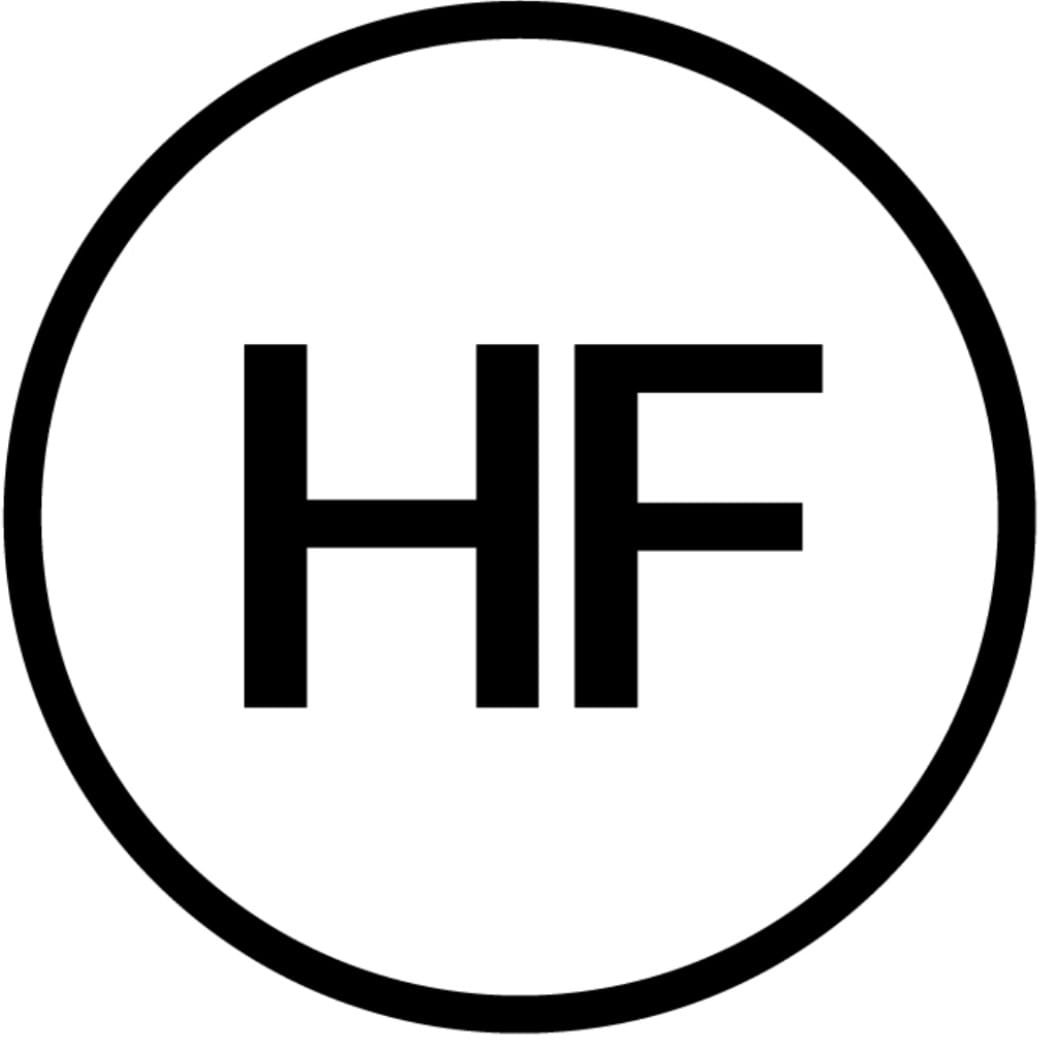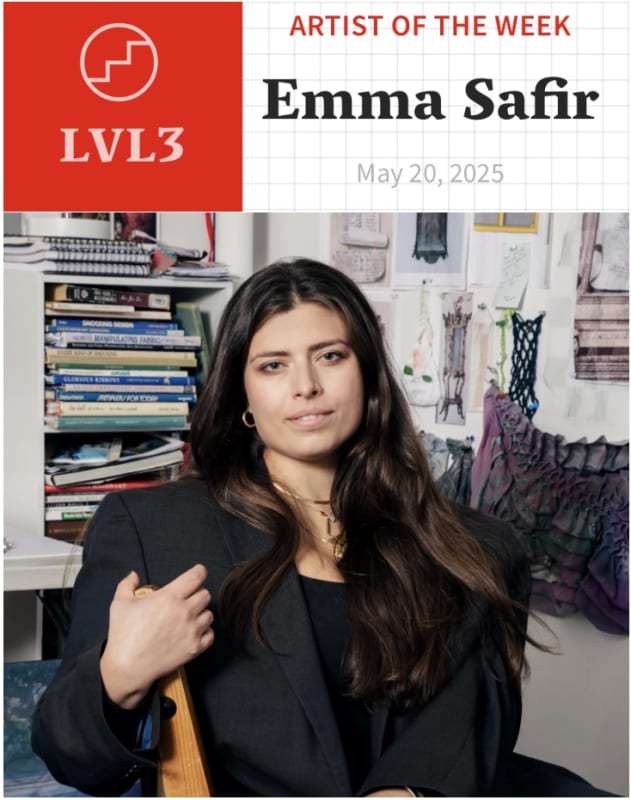Tell us a little bit about yourself and what you do.
I’m an artist living in Brooklyn NY with a studio in Midtown Manhattan. I was originally trained as a printmaker but have expanded how I work extensively in the past 15 years. My crossmedia practice spans painting, photography, digital manipulation, antiquarian textile techniques, and sculpture. I employ different modes of image generation—rubbings, analog film, digital photography, Photoshop and embroidery—to explore the gendered labor of textiles and how it relates to the history of computing. These invisibilized formations of domestic and digital labor share undervalued status in Western capitalism. Sewing is a language and a method of problem solving. It is also a politicized form of mark making, flouting its gendered domestic origins, or even its traditional use-value. I take photos of various “privacy solutions,” including privacy glass, reflections, and fabric behind and/or in front of glass which I digitally manipulate and print on fabric. I cannibalize my work through multiple media, reusing photographs and materials; in doing this, my paintings go through stages that separate my hand from physical image making while also making my hand more apparent with every technological slip. These processes of reinterpretation and regurgitation create a false sense of indexicality, nodding to what I see as to the fundamental impossibility of an indexical image—what Hito Steryel refers to as a “poor image,” degraded over time, paradoxically making the image new and singular. I use these principles when expanding materials, like casting low temperature pewter using silicone molds which deteriorate when cast.
What are some recent, upcoming or current projects you are working on?
As I write this, I’m on Fishers Island, NY as a Fellow at Lighthouse Works. I’m here to hopefully get to work in earnest for my solo opening at HESSE FLATOW in Tribeca this September. I’m also working to coordinate a summer show and feast with my dear friend Andrew Gardner at HESSE FLATOW East in Amagansett (more on that later).
What is one of the bigger challenges you and/or other artists are struggling with these days and how do you see it developing?
Personally, and I think this is true when talking to friends that are artists, the public facing part of our job is increasingly more important and increasingly more draining. Because of social media and how capitalism functions in the art world, we are expected to be both entrepreneurs and a “brand” version of ourselves… I think it’s hard to strike a balance, to use the tools we need to have a sustainable career as an artist, and to ignore it enough to be productive in the way we want to be in studio.
How do you see your work evolving in parallel to things that are going on around you right now?
I find that the work always mirrors in some way that is happening around me but I’m usually unaware of this as I’m making the work.
Is there any source material you find extremely important?
It’s important for me to see primary examples of what I’m looking at. By this I mean, if I’m thinking about an art historical painting, I want to try to make my way to this painting. If I’m thinking about privacy glass, I need to go find it and look at it and touch it in person. If I’m looking at a genre of textile manipulation, I want to see extant examples. I love to go to the Ratti Center at the Metropolitan Museum of Art. Their textile archives are extensive—you can see the collection online and then make appointments to see the works in person. Everyone who works there is incredibly knowledgeable and generous with their time—literally anyone can make an appointment.
Have you been reading or watching anything recently that you can’t stop thinking about?
Lately I have been reading about and looking at early puritanical settler gravestones in New England. I’m curious about their relationship to iconography—though they were anti-icon, most of these stones have various effigies, angel heads, skulls and crossbones etc. I think I’m interested in what it means to have a representative image of something or someone, versus an impression of them. Trying to figure out what I think about them and why I can’t stop thinking about them.
What materials do you use in your work? What are your thoughts on materiality?
Material exploration is the part of my practice that excites me and brings me the most joy in studio. How will I know how something works with something if I don’t try it? I use fabric, I manipulate fabric, I try all sorts of ways to handle it. I also have been working with pewter for the last couple years, and have been making casts from everything from stiffened fabric to hot glue drawings that are made from tracings of rubbings of doilies or of architectural samples. I’m always looking at and for stuff, and always thinking of ways to try to make something. I think that’s why I started out as a printmaker—I love having multiple steps and materials to make a singular piece, extended working and attention.
Is there a quote you’ve been thinking about a lot or one that you remind yourself of frequently?
Growing up my art teacher would always say “draw what you see, not what you know”. Though I don’t exactly “draw”, this still feels really relevant to my working process.
What artists do you think are making important work?
This question is challenging to answer, and I think that my answer would change too frequently to mean something is important rather than preference. To be honest, I think all art is both important and unimportant.
Do you have a specific process when entering the studio?
When I get to the studio I generally change out of my shoes and put on my beloved studio crocs. I tend to reorganize before I can jump into doing anything. I find that shifting things around in my studio is sort of like a brain warm up, getting reacquainted with where stuff is, where I left off, what I want to do that day. I like to have voices talking so I will generally listen to WNYC all day because they never stop talking, though this is getting harder and harder as of late…
What was the last show you saw that stuck out to you?
I was not able to go in person before leaving for this fellowship, but I am sad to have missed the Laura Owens show that’s up at Matthew Marks. I like how all encompassing this installation is: wallpaper > trompe l’oeil > digital spaces. I’m vaguely thinking about installation lately so I’m trying to look at anything relevant.
What is your process like in terms of conceptualizing?
Sort of a chicken/egg thing. I find something that I become fixated on, perhaps a technique, a place, a painting, a pane of privacy glass, a historical object and start furiously researching it. At the same time I’m in studio doing material research, trying things out in every iteration I can until I hit on something that resonates. As this happens the relationship between the “concept” I’m researching and the material components sort gel and start to guide and inform each other more directly.
Do you ever work in tandem with other artists/collaborate?
I do like to collaborate periodically, though it is not a huge part of my practice. A few years ago I did a video work with my friend Kara Güt as part of my solo at Blade Study in NYC in 2023. As mentioned above, I’m now collaborating with curator Andrew Gardner on a project this summer at HESSE FLATOW East in Amagansett. It stems from my obsession with the “Veronica Legend”, a christian tale not in the bible exemplified in many medieval paintings. Jesus is on the cavalry, Veronica offers him her veil, he wipes his face with it and as he does, his face is miraculously impregnated into the fibers of the cloth. I’m obsessed with the libidinal desire for indexicality or an exact copy of something/someone, and of the erotic exchange of bodily fluid via textiles. I’m thinking of this in conjunction with what is a “true” image, and how images degrade through reproduction. Veronica is the patron saint of photography, the image, laundry workers and linen makers. This project started as my desire to have a Feast for Veronica (her Saint Day is July 12). In talking about this it became apparent that this would be a good opportunity to do a group show and I tapped Andrew to work with me. As we are meeting with artists for the show, I’m realizing that artists have very different conversations with curators than they do with other artists who are not their close friends. There is a vulnerability and openness that artists have in speaking to curators, so I feel let into a new world and way of communicating, and it’s been really gratifying to see how these relationships grow. It makes me want to encourage folks to be more open with each other about what we’re working on! What’s the harm?
In regards to your making, what is something that you’ve always wanted to do and are working towards achieving it?
I’m currently attempting both quilting and producing a folding screen. Both are things I’ve always been curious about and have been putting off, but I have this opportunity to show in the fall and it seems like a good time to at least try. It’s hard! But I’m looking forward to getting through the problem solving portion of the process.
Can you share one of the best or worst reactions you have gotten as a result of your work?
I’ve done a lot of arguing, mostly with men, about whether or not my work qualifies as “painting”. To be honest, they’re more invested in the argument than me. The worst reaction I ever received was during my final critique at grad school (like the very last meeting). A visiting critic told me that my work “lacked intellectual specificity”—it still really haunts me. I think they just didn’t know how to react to “textile” art. For me the best reactions are ones of curiosity and discovery as someone looks at the surface of my paintings and tries to discern what’s happening.


